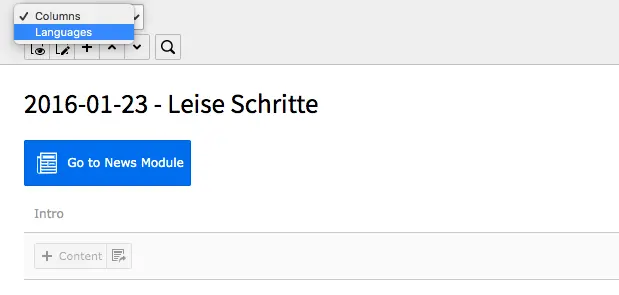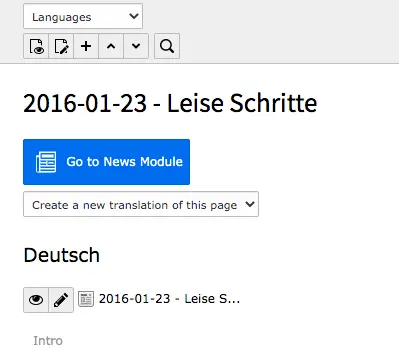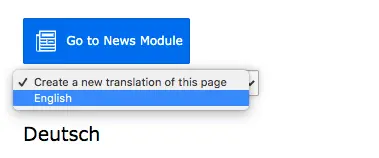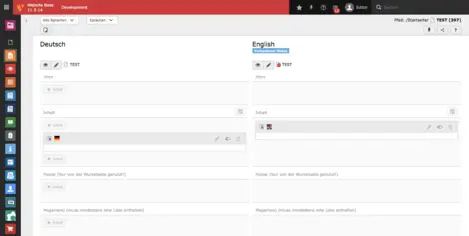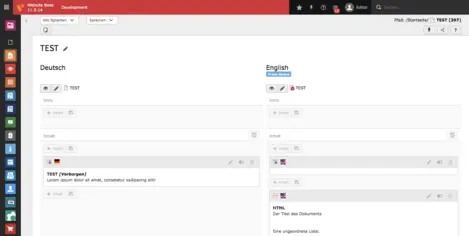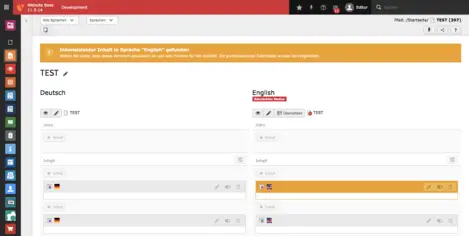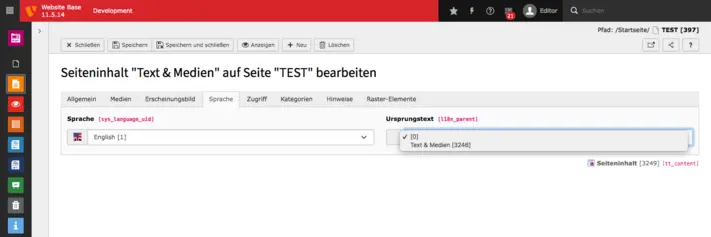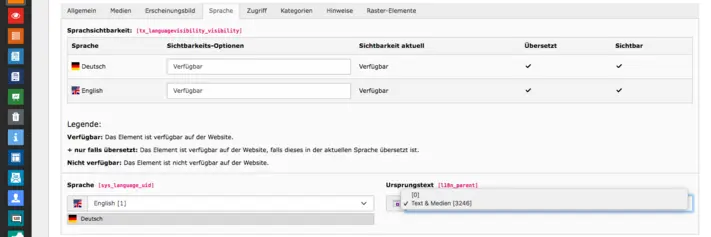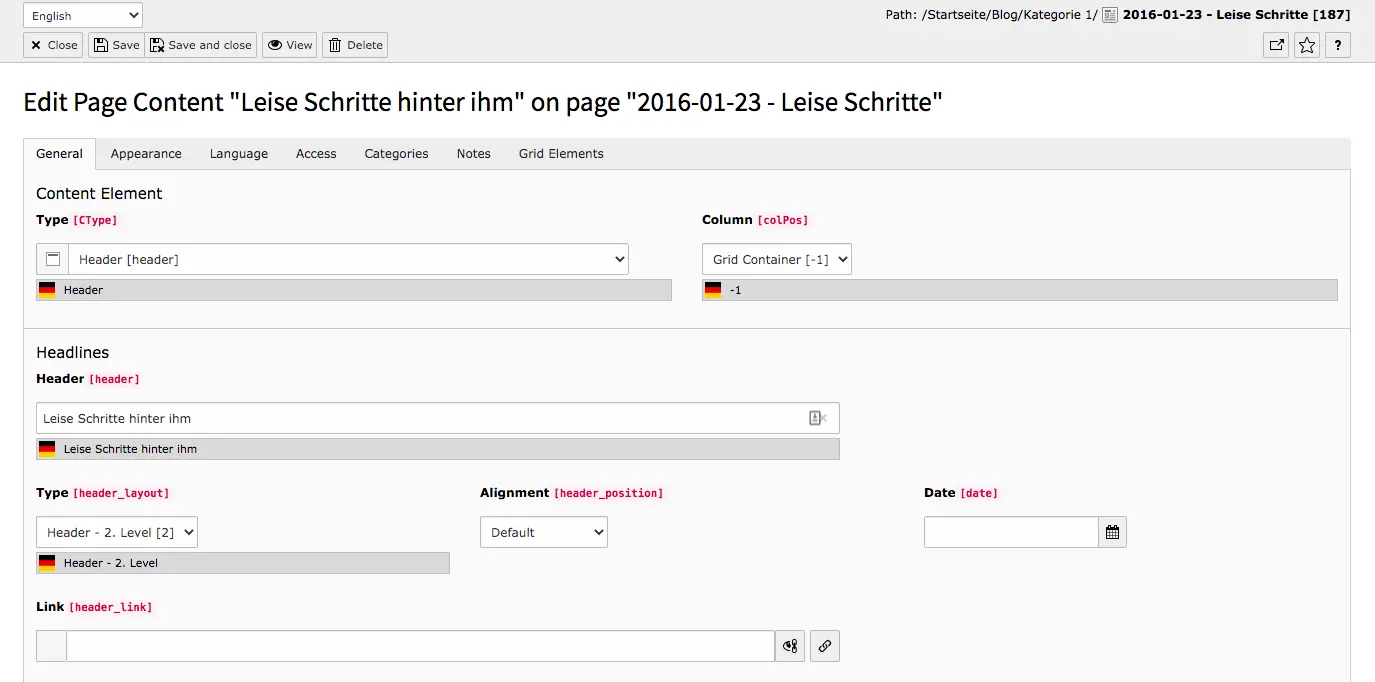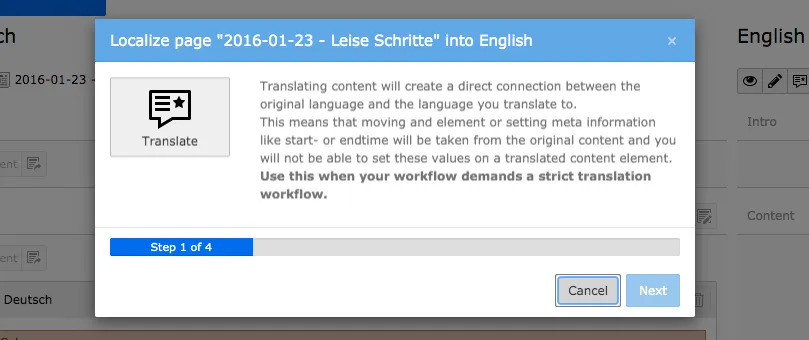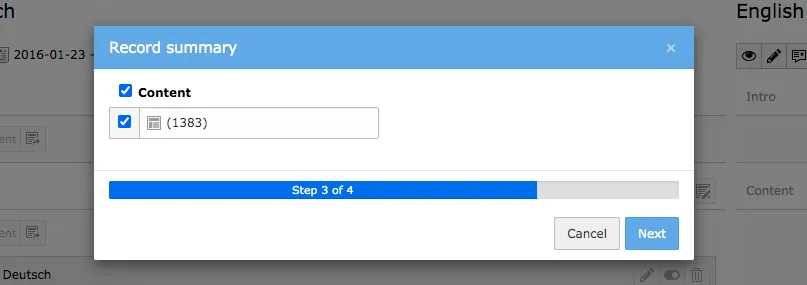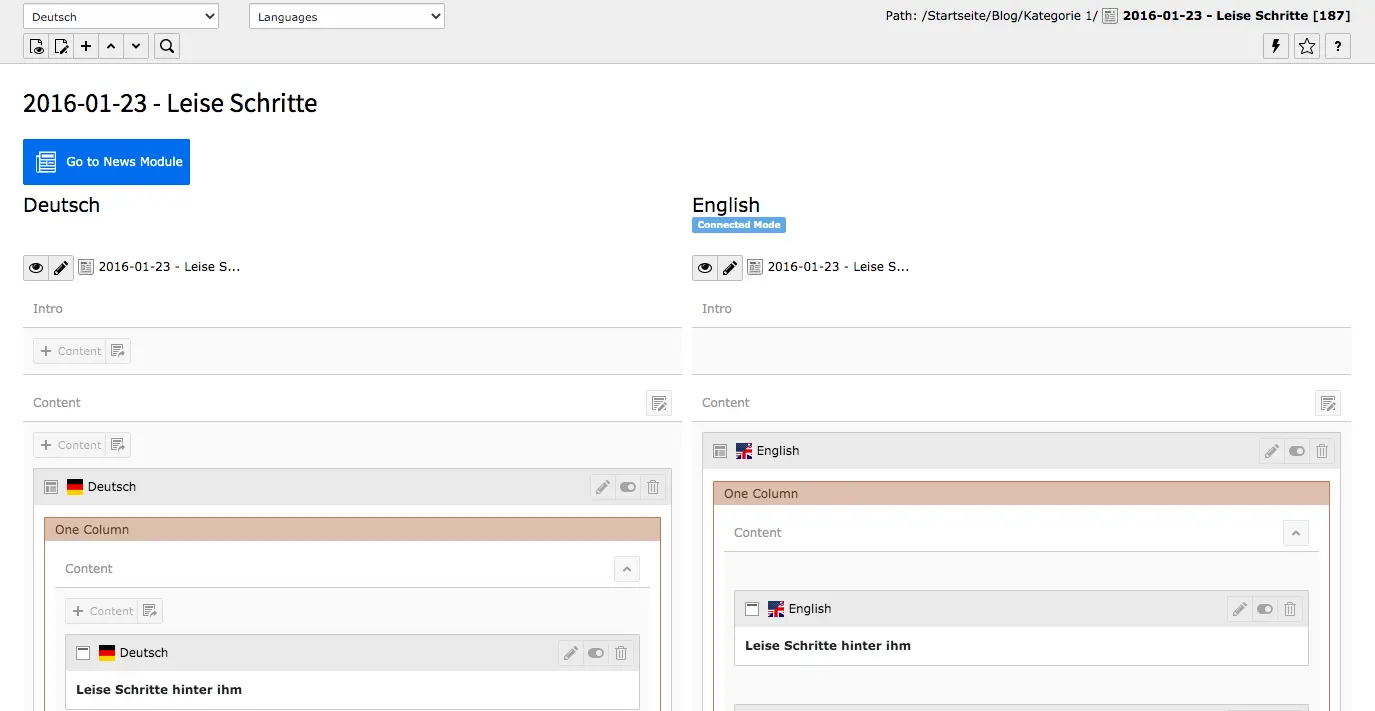In our Website-Base, translations are created in the same page tree. Translated pages therefore have the same structure as the version in the original language. So to translate pages, you do not have to leave the page module, you just have to change the view in the content area. After creating a page in the default language, switch from columns to languages, as shown below.
If you have not yet created a translation, you will see a field below the page name: Create new translation of this page. Click on the field and select the language into which you want to translate the page. (Only languages that the administrator has additionally installed for you are available for selection).
Connected, free and mixed mode
When translating, there are basically three modes available: connected, free and mixed. In the connected mode, the default language and the other languages are linked, so changes in the original language are always reflected in the translation. In free mode, content elements in the languages are simply created independently. By default, connected mode is displayed in a translated page as long as no content elements have been translated. When you use the translate feature, as described below, the connected mode remains. However, if you create content items in the translated page regardless of the default language, you switch to free mode. The mixed mode occurs when, for example, you create new independent content elements in another language in the connected mode. The elements that are not linked to the default language are highlighted in the content area, as it can be seen in the screenshot.
In the properties of the content elements, unrelated elements can be linked to each other. To do this, simply go to the Language tab in the translated content element and select the content element in the default language that you want to link it to. For this, it is helpful if the content elements have unique headings to be able to link the correct element.
Conversely, linked content elements can also be unlinked by setting the value [0] in the translated content element, also in the Language tab under source text.
Translate (in connected mode)
After you have selected the language, the page properties of the translated page are displayed. The system first takes all values (title, metadata etc.) of the original page. You must now enter the translations. Below each setting and content you can see the value of the default language. Different options and fields are available depending on the page type. For more information, please visit our documentation on standard, shortcut, news, category pages and general page properties.
Save and close the changes in the page properties, you will now see a column with the content elements of the original page on the left and a column for the new language on the right in the content area, but no content elements are available there yet.
Now click on the Translate button on the right side. In the menu that appears, select Translate, then click Next and click Next again.
If you create additional content elements in the original language after this step, these must be 'translated' by repeating the steps described above.
If you want to exclude content elements from translation, uncheck this element in the menu that appears (step 3 of 4).
Now content elements are also available on the left side. These must be customized and translated just like page properties. Here too, all values and contents initially match the original. Below each content and setting you can see the values in the system language. On the Language tab, you can also see the original content element to which the translation is linked.
In our documentation overview you will find all instructions for editing content elements.
If you make changes in an original content element after the translation, this is displayed within the content properties of the translated version. Next to the note you can also see what was changed: Red marked values were replaced with green marked values.
Would you like to know more?
All information about the available editions can be found on the webpage for our TYPO3 Website-Base. You have the possibility to get a Website at a Fixed Price or you decide for a Website as a Service package, with which no further costs for hosting or security and function updates will come up to you.
